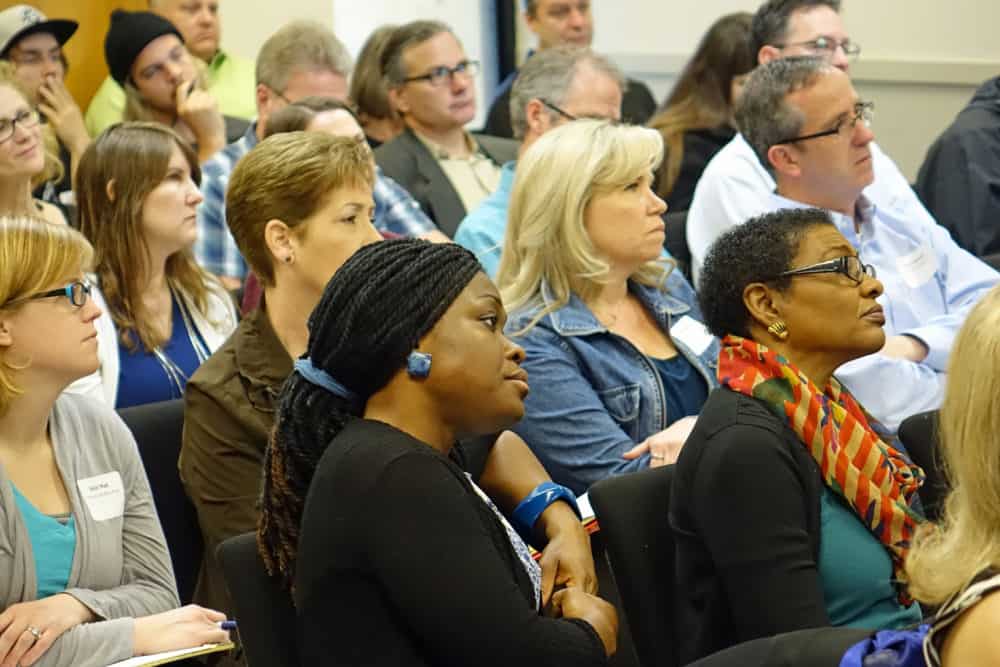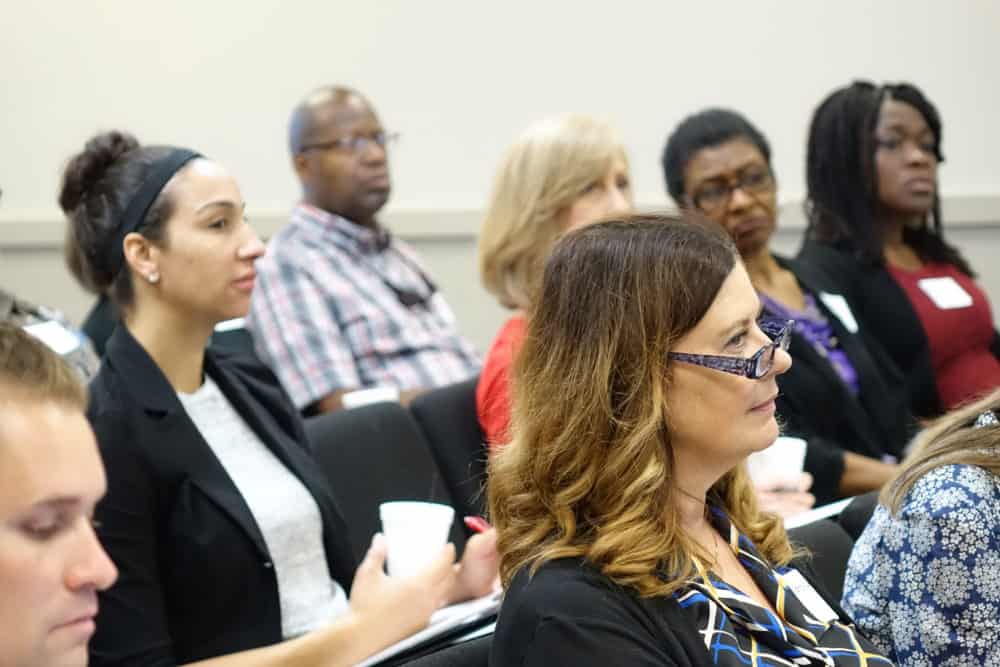Crafting a Clear Nonprofit Communication Strategy
The 2 Cs of Communication: Clarity and Connection
The first thing a nonprofit needs to do when assessing their communication strategy is to ask themselves, “What do we do?” and “What do we want others to do?”
Sharon Sampson, CEO of Open Book Communications said often times when she looks at a nonprofit organization she can’t boil down what they do, and what they want others to do.
“Often times the call to action isn’t clear, because there’s a lot of calls to action (volunteer, donate, pray, advocate). It’s tempting to say all of it, but you risk losing clarity,” said Sampson.
[pullquote]Get to the “WHY” as soon as possible –both why you do what you do, and why your audience should care.[/pullquote]
Clarity
Get to the “WHY” as soon as possible –both why you do what you do, and why your audience should care. Stakeholders need to be equipped with a simple way of understanding what do you do and the difference it makes. That has to be more than a list of programs or outputs. Your “WHY” has to drive deeper to the mission and outcomes that make donors and stakeholders feel part of something larger than themselves.
Nonprofits tend to operate in the abstracts, unlike private companies who are selling products. If you aren’t careful, you may confuse your user about what you do, and what you want them to do.
“If you only use abstract words (like hope, grace, or movement) and show generic pictures (like smiling kids), that creates a cycle of misunderstanding your specific mission,” said Sampson.
3 Key Things Working Against You:
- People are in hurry. Most visitors spend less than 15 seconds on a website.
- People are on their phones. Only so much of your website fits on a small screen.
- People forget. They may hear your message, but can’t articulate it later.
Connection
 Focus on forging a connection. Connection is your goal, you have to make a connection with a person in a human way. Being relentlessly relational is central to building a connection with your audience.
Focus on forging a connection. Connection is your goal, you have to make a connection with a person in a human way. Being relentlessly relational is central to building a connection with your audience.
Humans connect both through the head and the heart. You need to find the balance with concrete data and statistics to appeal to the head, as well as abstract inspiration to appeal to the heart.
“If you only lead with facts, figures, statistics, you are missing the heartbeat of your organization. If you only lead with inspirational stories, your mission can seem baseless or vague,” said Sampson.
Brene Brown, a sociologist and researcher defines connection as, “the energy that exists between people when they feel seen, heard, and valued… and when they derive sustenance and strength from the relationship.”
We are fundamentally hard-wired for connection and built for relationship. We are more motivated when we are connected to others. You want partners, so you have to get to the WHY of your organization, past the WHAT your organization does and HOW it does it. Then embed that WHY answer into everything.
[pullquote]Mission is not your mission statement. A motive prompts, but a mission activates. [/pullquote]
The WHY: Mission, Not Motive
Mission is not your mission statement. A motive prompts, but a mission activates. The WHY mission is relational in nature versus being transactional. Sharon Sampson suggests reading Simon Sinek’s book, “Start with Why” or listening to Sinek’s Ted Talk to help you understand the concept of leading with the WHY.
To find out your mission, ask yourself:
- What’s the most important thing a stranger should know about your organization?
- I long for my organization to ( fill in the blank )?
- What brings tears to your eyes when you talk about your organization?
“The real win isn’t getting people to do something. It’s getting them to want to do something. That only happens when you make a connection, when you align on a common mission, and they want to be a part of the mission,” said Sampson.
Your mission is your succinct, from the heart answer that activates you day in and day out. You know a stakeholder has caught onto your mission, when he/she does something because they genuinely want to, to be a part of the mission, rather than because they are strictly asked to do something.
Practical Tips for Building a Successful Communication Strategy:

- Consider finding interns that are college kids who can help you with photography, videography and design.
- Treat your communication strategy expenses as an investment, not just a cost.
- Gather 5-10 donors for focus groups to ask them the following questions:
-
-
-
- How do you talk about what we do?
- In your own words what is our mission?
- What are the misconceptions people have about us?
- In 5 years what would a win look like for us?
-
-
Sharon Sampson’s Top Pitfalls in Nonprofit Communications:
- Misuse of the word ‘brand’ – Brand is not your logo or your mission statement. Brand is people’s experience with you, what they feel when they’re with you, their gut reaction to you.
- Thinking in Silos – Don’t think in terms of independent, sovereign ideas. Think beyond the landscape about how ideas flow together.
- Being reactive, not proactive – Stop and ask yourself proactively what a win looks like, what are you asking people to do?
- People-pleasing – Too many voices cloud the message. Often it means saying no to short term wins for the greater win.
- Expense vs. Investment – Don’t think of your communication/design budget as an expense as opposed to an investment you want to leverage, as a return on investment. That changes the way you think about and talk about the investment to your board or donors.
- Good branding is “slick” and therefore wrong – Don’t fret that “fancy” designs looks like you are spending money on the wrong things. There is a danger to thinking that excellence is not an important standard. If you believe your mission matters, it deserves excellence.
- Saying more than doing – Substantiate the work you say you’re doing. You need to be doing something, before you can talk about all you are doing.
- Lack of user testing – Asking for critique and feedback. Find out what people think, rather than assuming you know what everyone thinks.
- Being formulaic – It’s easy to keep using a cookie cutter method. Don’t just do what you’ve always done, or something that’s worked for the last 5 years.
- Stop learning – Be part of round table discussions. Read books and blogs. Talk to other leaders. Get on the mailing list for other nonprofits. Know how Facebook’s algorithms keep changing. Risk looking stupid, vulnerable, curious.